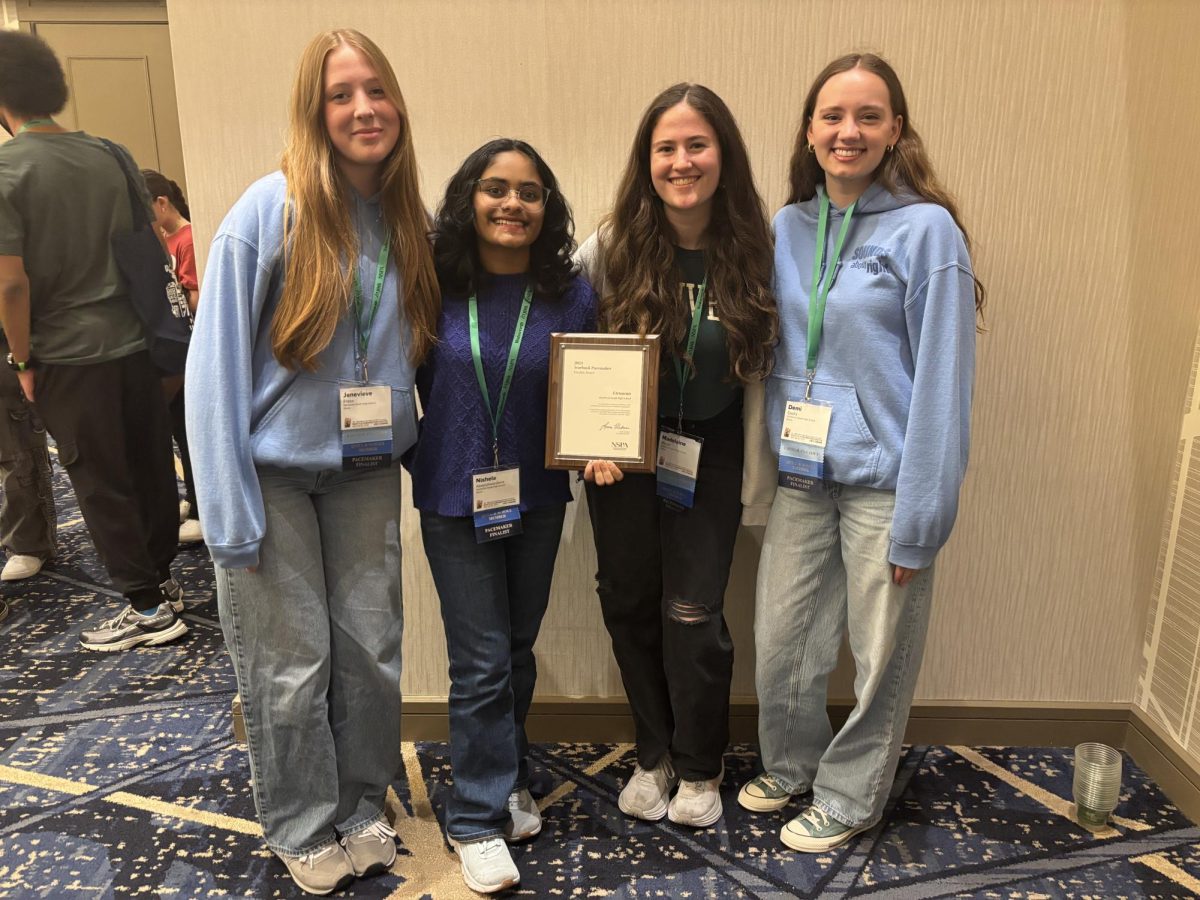South’s enrollment is projected to continue rising significantly, hitting an estimated capacity of over 3,100 students by 2017, according to studies by the District 225 Board of Education. This growth poses space concerns for the building.
South currently has a student body of 2,738, according to Principal Dr. Brian Wegley. The rise in enrollment is now expected to plateau after its initial growth as opposed to returning to a stable student body size as predicted in the earlier “bubble” projection.
Michael Riggle, District 225 superintendent, said the district is doing everything it can in order to limit “over-building” extra space and facilities to accommodate the rise in South attendance.
“One of the things the district is concerned about is that we don’t overbuild,” Riggle said. “What we don’t want to do is to take taxpayer dollars and expand the buildings [so] it becomes bigger than it will ever be used for the purposes of just a couple of years.”
Despite the district’s hesitance, Jeffrey Rylander, instructional supervisor of the Science Department, expressed concern for crowding of not only classrooms but also space for teachers to work.
“We’re not going to be able to fit that many classes in our classrooms with our current enrollment projections,” Rylander said. “Right now, we are at about an 85 percent capacity, where 100 [percent] would be if we used every classroom every period. You will be teaching biology in a [physics lab] and physics in a chemistry lab. Our department will be at its capacity […] within the next year.”
Lara Cummings, assistant principal for Student Services, said that the quality of education has the potential to decrease with the rise of students. She is also worried that students may be denied the opportunity of taking certain classes.
“Our real goal for students here is to find their passion […] my concern is that some of these specialty classes will fill up,” Cummings said. “That’s never how we’ve operated at Glenbrook South. We define ourselves by students deciding what [courses] they want to take and us being able to provide them, not having to tell students ‘no, we don’t have the space.’”
Senior Chris Coleman said he thought the existing educational environment could change and not necessarily for the better.
“It’s going to put more strain on the teachers and resources,” Coleman said. “We’re going to be starting to see larger classes as well as a higher student-to-teacher ratio which might have an effect on the education quality.”
Riggle said that increasing class sizes is being considered and that adding even one body to each class would be noticeable. However, departments such as the Guidance Department have expressed the need for additional staff, calling into question where these extra bodies will go.
“Each of our guidance counselors has a caseload of 250 [students],” Cummings said. “If we go up to 2,930 students next year, we will need a twelfth guidance counselor […] I’m struggling to figure out where [in the building] this guidance counselor would [work] next year.”
Rylander noted that the situation in the Science Department is not as dire as in the Guidance Department, but limited space poses many challenges for that department as well.
The Board is discussing several options on how best to meet the rise in enrollment. According to Riggle, a decision could be made later in the 2014-2015 school year. In the meantime, proposed short-term solutions include creating additional parking space over the summer of 2014 [see “Parking,” page 2].
For now, construction within the building is only taking place to accommodate the size of next year’s student body, according to Freund. Conversations about how best to do so are ongoing.
Freund feels that if the decision-making process is protracted, the enrollment will only increase, and South might lose “some of its culture.” However, he also agreed with Riggle when he conveyed the importance of caution while balancing the timing of the decision and the decision itself.
“If we are going to 3,200 [students by 2017], we have to prepare for it,” Freund said. “And the longer you wait, the higher [our] enrollment is going to get … I think timing is important, but I also think thoroughness is important as well.”






